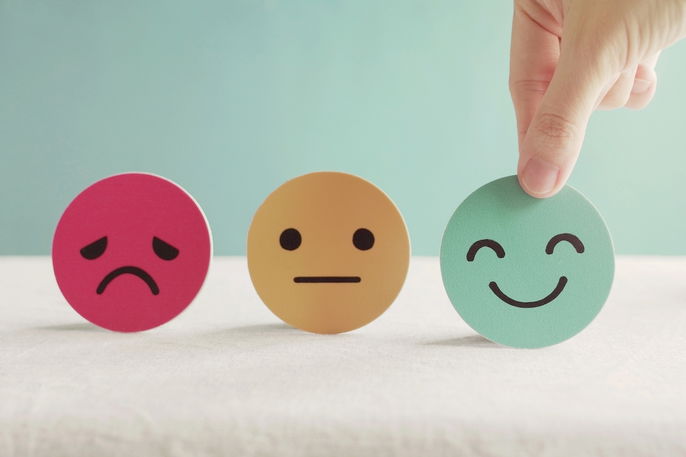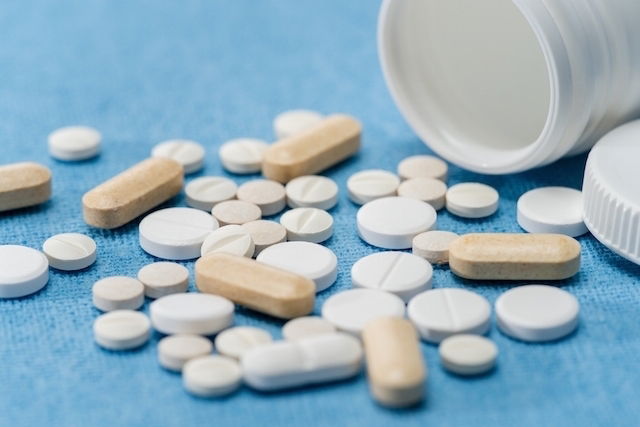Bipolar disorder is a severe mental illness that causes fluctuations in mood which can range from depression and deep sadness, to mania (extreme euphoria) or hypomania (a more mild form of mania).
This disorder, also called manic-depressive illness, affects both men and women and can start in late adolescence or early adulthood. It usually requires lifelong treatment.
It is important to note that merely having mood swings does not mean that bipolar is present. In order for the disease to be confirmed, an assessment must be made by a psychiatrist and psychologist to evaluate the how a patient copes with their mood and how it interferes with their activities of daily living.

Main symptoms
Symptoms of bipolar disorder will depend on the depend on the phase or period the person is experiencing. Patients can experience phases of mania, depression or both.
Manic episode symptoms
- Restlessness, euphoria, and irritability;
- Lack of concentration;
- Unrealistic belief in your abilities;
- Unusual behavior;
- Increased drug use;
- Very fast speech;
- Lack of sleep;
- Denial that something is wrong;
- Increased sexual desire;
- Aggressive behavior.
Depressive episode symptoms
- Bad mood, sadness, anxiety, and pessimism;
- Feelings of guilt, worthlessness, and helplessness;
- Loss of interest in things you liked;
- Constant fatigue;
- Difficulty concentrating;
- Irritability and agitation;
- Excessive sleep or lack of sleep;
- Changes in appetite and weight;
- Chronic pain;
- Thoughts of suicide and death.
These symptoms may be present for weeks, months, or years and can be present for the whole day, every day.
Online bipolar symptoms test
Report your symptoms below to assess you risk for bipolar disorder. Your answers should reflect your thoughts, feelings or behaviors in the last 15 days.
Types of bipolar disorder
The symptoms of bipolar disorder can range in duration and intensity. There are 3 categories of bipolar disorder that can be identified by a psychologist or psychiatrist:
1. Bipolar disorder type 1
This type of bipolar disorder is mainly characterized by periods of mania, in which the person is in an excessively happy mood, with extreme euphoria, high energy, agitation, delusions of grandeur, and little need for sleep. There may also be irritability, aggressiveness, or paranoid delusions, and therefore this type of bipolar is often confused with schizophrenia.
To identify a manic episode, at least 3 or 4 of the symptoms must last for at least 1 week. These symptoms usually cause many problems for the person, as they interfere in their relationships and in their daily lives. Many people require hospitalization when they present with type 1 bipolar.
Although manic episodes are more prevalent, the person may also alternate mania with some episodes of depression.
2. Bipolar disorder type 2
This type of bipolarity is characterized by phases of both depression and hypomania. These episodes are milder than type 1 and do not totally interfere in the person's daily life. Generally, the symptoms include higher sociability, increased impulsivity, less need for sleep, greater capacity for initiative, high energy, and impatience.
When alternating episodes of depression and hypomania appear (without the mania of type 1), the illness is classified as type 2 bipolar disorder.
3. Cyclothymic Disorder
This type is characterized by persistent hypomanic and depressive symptoms, and is considered to be a more mild form of bipolar disorder. Symptoms last longer and can persist for at least 2 years. Because the symptoms are very similar to depression, many people end up being treated for depression instead of bipolar disorder.
Treatment
Bipolar disorder has no cure, but it can be managed with various forms of treatment, such as psychotherapy, prescription medication and even complimentary holistic methods.
The main forms of treatment include:
1. Use of medication
For treatment of bipolar disorder to be effective, medications and doses should always be directed by a psychiatrist and taken under medical supervision. The most common medications indicated for bipolar include:
- Mood stabilizing medication: these control manic episodes (e.g. lithium, valproic acid, or carbamazepine)
- Antipsychotics: these are used for persistent depression and mania (e.g. olanzapine, risperidone, quetiapine, or aripiprazole)
- Antidepressants: these help to manage depression and must often be combined with an antipsychotic to also manage mania (e.g. fluoxetine)
- Anxiolytics: these help to reduce anxiety and improve sleep (e.g. benzodiazepines)
Medications can be used in conjunction with psychotherapy to achieve a therapeutic effect.

2. Psychotherapy
Psychotherapy is very important in the treatment of bipolarity and can be done individually, in families, or in groups.
There are several therapeutic methods, such as interpersonal therapy, social rhythm therapy, and psychodynamic therapy. Social rhythm therapy consists of establishing a daily routine for sleep, meals, and exercise, with the aim of creating more predictability and reducing mood swings. Psychodynamic therapy involves exploring and interpreting the meaning behind the patient’s behaviors, so that the patient becomes more aware and symptoms can be prevented.
Another form of psychotherapy is cognitive-behavioral therapy, which helps to identify and replace unhealthy feelings and behaviors with positive ones, in addition to developing coping strategies for dealing with stress and unpleasant situations. In addition, the family or close social network should be encouraged to learn about bipolar disorder to also help them cope with the disease, and to teach them to identify symptoms and intervene as necessary.
3. Phototherapy
Another less common way to treat manic episodes is through phototherapy, which is a special therapy that uses various colored lights to influence a person's mood. This therapy is especially indicated for cases of mild depression.
4. Non-pharmacological methods
Non-pharmacological methods for treatment of bipolar disorder should be used as a compliment, and not a substitute, for medical treatment. These types of methods aim to reduce stress and anxiety to help the person feel more balanced, and thus preventing new episodes.
People with bipolar disorder should perform regular exercise (e.g. yoga, Pilates, or relaxing walks) and participate in leisure activities and hobbies (e.g. watching movies, reading, painting, gardening). Healthy eating and the avoidance of processed foods should also be taken into consideration.
Drinks with calming properties (e.g. St. John's wort tea, passionflower tea, chamomile tea, or lemon balm) and regular massages can also help to reduce tension.
How to prevent crises
Managing symptoms and preventing episodes of bipolar disorder requires the person to take their medication regularly. The medication should be assessed by the prescriber at specific intervals to ensure their continued therapeutic effect. People who have bipolar should also avoid any alcohol or drug intake.
Complications of bipolar disorder arise when treatment is not carried out properly. Noncompliance to treatment can lead to severe depression (which can result in a suicide attempt) or to excessive mania, (which can result in impulsive decisions and spending a lot of money). In these cases, hospitalization may be necessary to stabilize the mood episode.






























